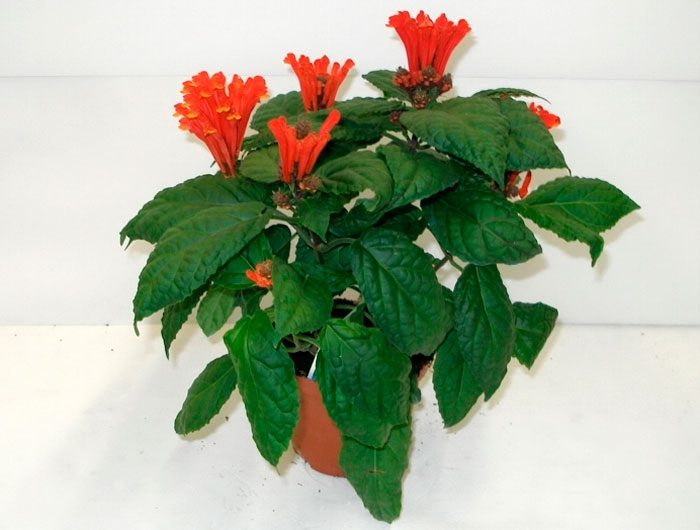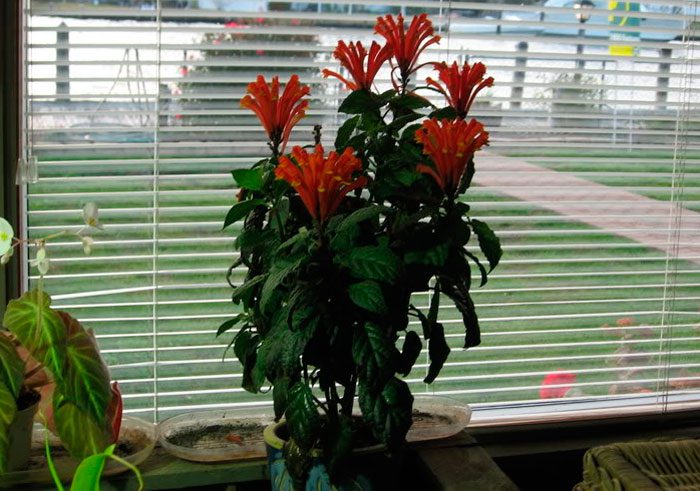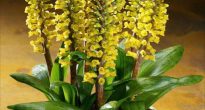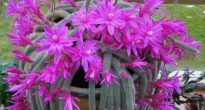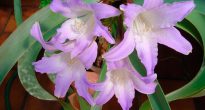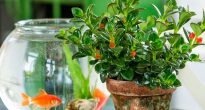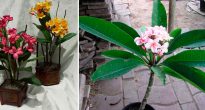A herbaceous plant like Scutellaria is evergreen. It is directly related to the family Lamiaceae. Under natural conditions, it can be found in almost every corner of the planet. The name of scutellaria is derived from the Latin word "scutellum" - "shield". The structure of the flower is taken into account here. So, his upper lip has a transverse scaly fold, which is outwardly similar to the scutellum. At home, only one species of this flower is grown - the Costa Rican scutellaria.

Costa Rican scutellaria (Scutellaria costaricana) - This perennial is a semi-shrub or herbaceous plant. Its slightly woody shoots reach a height of 20 to 60 centimeters and have 4 sides. Green, oppositely located leaves have an elliptical-cordate shape and a comb-like edge. The flowers grow in the leaf axils and are 5 to 6 centimeters long. They are part of spike-shaped inflorescences. The tube of the two-lipped flowers is orange-red; it is compressed from the sides and forms an angle from above. The yellowish bends of the corolla are almost completely closed. They are folded in such a way that they form a kind of helmet. Due to this feature of the flowers, this plant is called Shlemnik.
Content
Home scutellaria care
Illumination
Such a plant is photophilous. He needs a well-lit place, but the light must necessarily be diffused. Recommended to be placed on a window in the western or eastern part of the room. When placed on a south window in summer, the scutellaria must be protected from direct sunlight. If there is little light, then there is no flowering, and the leaves become faded.
Temperature regime
In the warm season, the plant feels best at temperatures from 20 to 25 degrees. In winter, the temperature should be reduced to 10-15 degrees.
Humidity
Needs high humidity. In this regard, the foliage should be systematically moistened from the sprayer, and expanded clay should be poured into the pan and a small amount of water should be poured, but make sure that the liquid and the bottom of the container do not touch. For hygienic purposes, the flower needs to be systematically shower.
How to water
Watering in spring and summer should be abundant. However, there should be no stagnation of liquid in the substrate. With the onset of winter, watered less, however, you should not allow the soil to dry out. The water must be soft.You can use either lukewarm water or room temperature.
Top dressing
During intensive growth, fertilizing should be carried out 2 or 3 times a month. For this, a complex liquid fertilizer for flowering plants is used.
Pruning
Pruning should be done once a year in the spring. In this case, a shoot with a length of 5 to 15 centimeters should remain.
Transplant features
The transplant is carried out 1 time in 2 or 3 years. Loose soil is needed, which allows water and air to pass through well. To prepare the soil mixture, you should combine sod and leafy soil, as well as sand, taken in a ratio of 2: 2: 1. You can buy a universal soil for flowering plants. Do not forget to make a good drainage layer at the bottom.
Reproduction methods
For propagation, seeds and a method of cuttings are used.
For rooting cuttings, peat mixed with perlite is used. Cover the handle with a cap or a transparent bag. For better rooting, you need to maintain a temperature of about 25 degrees, and you also need a bottom heating. Grown up young plants must be pinched over 4 leaves. This will help make the branching stronger. Then they can be planted in permanent pots with several flowers in one.
Pests and diseases
The main pest is aphid... It can be sick with various fungal diseases arising from the stagnation of liquid in the soil.

